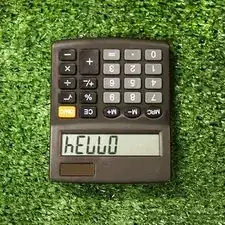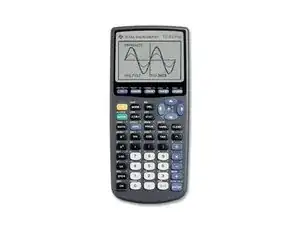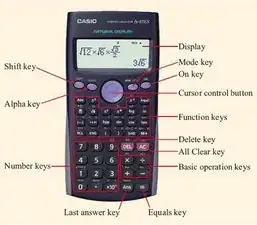
Sharp EL-520X Loose Circuit Board Wire Fix
These are some common tools used to work on this device. You might not need every tool for every procedure.
Calculators come in a range of sizes, and perform various different tasks. Most modern scientific and graphing calculators are more powerful than older full-sized computers. Before the invention of the modern calculator, many technologies were created to help humans count and calculate various problems. It all began with the abacus, which simplified the addition of large quantities of units. With the passage of time, the slide rule became the next major advancement in calculators which was then dethroned by the use of mechanical calculators. The modern electronic calculator was introduced in the 1960s, but didn’t take the world by storm until the 1970s. By 1985, the first graphical calculator was introduced and further advancements in the calculator industry were made.
Today, there are three major types of calculators: basic, scientific, and graphing. Basic calculators can compute basic math functions such as addition, subtraction, multiplication, division, exponentiation, and logarithm. Scientific calculators compute much more complex equations and problems than basic calculators and are often used to solve statistical and trigonometric calculations. These calculations are prominent in the chemistry and engineering fields. Graphing calculators are the most complex of the types of calculators and often feature large displays to plot graphs and calculate multiple variables.
All calculators have number buttons 0 to 9, plus the decimal button, and at least four functions: addition, subtraction, multiplication, and division.
The make and model will typically on the outer edge of the face of the calculator, above and to the left of the screen. The model number and serial number will typically be engraved on the back of the calculator at the top or else on a sticker on the inside of the battery compartment.
A "basic" calculator is also often referred to as a four-function calculator because it will have at least four standard functions: addition, subtraction, multiplication, and division (+, -, x and /). Most four-function calculators will also have percentage and square root buttons (% and √).

Graphing calculators allow you to type in a function, and it will then show you a graph of it. For this reason, the screen size is larger than basic and scientific calculators. Graphic calculators are the largest type of calculator, often stretching over 7 inches long and 3.5 inches wide. The most ubiquitous graphic calculator is the TI-83 and TI-84. "TI" is short for Texas Instruments which is the most popular graphic calculator manufacturer. You can also distinguish a graphic calculator by the following buttons: "Y=", "Window", "Zoom", "Trace", and "Graph".

A "scientific" calculator is sometimes referred to as an engineering calculator. Scientific calculators have much smaller screens and are often smaller in overall size compared to graphing calculators. A typical Casio or Texas Instruments scientific calculator will be about 6 inches long and 3 inches wide. It will have function keys like sin, cos, tan, and x2 and ^, etc. There will also be a "mode" button and arrow keys (called cursor control keys).
